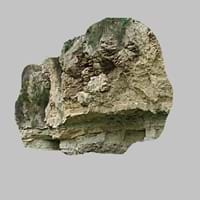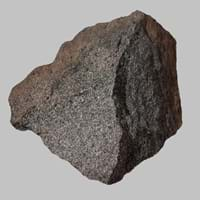Definition
A water-soluble mineral sediment resulting from concentration and crystallization by evaporation from an aqueous solution
Enderbite rock is an igneous rock which belongs to the Charnockite rock series
Origin
USA
Enderby Land, Antarctica
Discoverer
Usiglio
Unknown
Etymology
From a sediment left after the evaporation
From its occurrence in Enderby Land, Antarctica
Class
Sedimentary Rocks
Igneous Rocks
Sub-Class
Durable Rock, Soft Rock
Durable Rock, Hard Rock
Group
Not Applicable
Plutonic
Other Categories
Coarse Grained Rock, Fine Grained Rock, Medium Grained Rock, Opaque Rock
Coarse Grained Rock, Opaque Rock
Color
Colourless, Green, Grey, Silver, White
Black, Grey, Orange, Pink, White
Durability
Durable
Durable
Appearance
Glassy, Vesicular and Foilated
Veined or Pebbled
Interior Uses
Decorative Aggregates, Entryways, Flooring, Homes, Interior Decoration
Bathrooms, Countertops, Decorative Aggregates, Entryways, Floor Tiles, Homes, Hotels, Kitchens, Stair Treads
Exterior Uses
As Building Stone, As Facing Stone, Garden Decoration, Paving Stone
As Building Stone, As Facing Stone, Bridges, Paving Stone, Garden Decoration, Office Buildings
Other Architectural Uses
Curbing
Curbing
Construction Industry
As a Flux in the Production of Steel and Pig Iron, As a Sintering Agent in Steel Industry to process Iron Ore, As Dimension Stone, Cement Manufacture, for Road Aggregate, Making natural cement, Manufacture of Magnesium and Dolomite Refractories
As Dimension Stone
Medical Industry
Taken as a Supplement for Calcium or Magnesium
Not Yet Used
Antiquity Uses
Artifacts
Artifacts, Monuments, Sculpture, Small Figurines
Commercial Uses
Used in the manufacture of Ceramic Powder, Used in the preparation of Sulfuric Acid and Silicon Diborite
Curling, Gemstone, Laboratory bench tops, Tombstones
Types
Not Available
Not Available
Features
Generally rough to touch, Splintery, Veined
Available in Lots of Colors and Patterns, It is One of the Oldest, Strongest and Hardest Rock
Archaeological Significance
Monuments
Not Yet Used
Used
Famous Monuments
Not Applicable
Data Not Available
Sculpture
Not Yet Used
Used
Famous Sculptures
Not Applicable
Data Not Available
Pictographs
Used
Not Used
Petroglyphs
Used
Not Used
Figurines
Not Yet Used
Used
Formation
Evaporite is water-soluble mineral sediment which forms from concentration and crystallization by evaporation from an aqueous solution.
Charnockite is an intrusive igneous rock which is very hard and is formed due to weathering of existing rocks.
Mineral Content
Calcite, Cancrinite, Gypsum, Kyanite, Magnetite
Amphibole, Biotite, Feldspar, Hornblade, Micas, Muscovite or Illite, Olivine, Plagioclase, Pyroxene, Quartz
Compound Content
CaMg(CO3)2, CaO, Calcium Sulfate, KCl, MgO, NaCl
Aluminium Oxide, CaO, Iron(III) Oxide, FeO, Potassium Oxide, MgO, MnO, Sodium Oxide, Phosphorus Pentoxide, Silicon Dioxide, Titanium Dioxide
Types of Metamorphism
Burial Metamorphism, Cataclastic Metamorphism, Contact Metamorphism, Impact Metamorphism, Regional Metamorphism
Contact Metamorphism, Impact Metamorphism
Types of Weathering
Not Applicable
Biological Weathering, Chemical Weathering
Types of Erosion
Not Applicable
Glacier Erosion, Sea Erosion, Water Erosion, Wind Erosion
Grain Size
Medium to Fine Coarse Grained
Coarse Grained
Fracture
Conchoidal
Not Available
Porosity
Less Porous
Very Less Porous
Luster
Subvitreous to Dull
Not Available
Compressive Strength
Not Available
Cleavage
Perfect
Not Available
Toughness
Not Available
Not Available
Specific Gravity
2.86-2.99
Not Available
Transparency
Translucent
Opaque
Density
2.8-2.9 g/cm3
2.6 g/cm3
Specific Heat Capacity
Not Available
Resistance
Heat Resistant, Pressure Resistant
Heat Resistant, Wear Resistant
Deposits in Eastern Continents
Africa
Not Available
Not Available
Europe
United Kingdom
Not Available
Others
Not Yet Found
Antarctica
Deposits in Western Continents
South America
Colombia, Paraguay
Not Available
Deposits in Oceania Continent
Australia
Central Australia, Western Australia
Not Available
All about Evaporite and Enderbite Properties
Know all about Evaporite and Enderbite properties here. All properties of rocks are important as they define the type of rock and its application. Evaporite belongs to Sedimentary Rocks while Enderbite belongs to Igneous Rocks.Texture of Evaporite is Earthy whereas that of Enderbite is Granular. Evaporite appears Glassy, Vesicular and Foilated and Enderbite appears Veined or Pebbled. The luster of Evaporite is subvitreous to dull while that of Enderbite is not available. Evaporite is available in colourless, green, grey, silver, white colors whereas Enderbite is available in black, grey, orange, pink, white colors. The commercial uses of Evaporite are used in the manufacture of ceramic powder, used in the preparation of sulfuric acid and silicon diborite and that of Enderbite are curling, gemstone, laboratory bench tops, tombstones.










